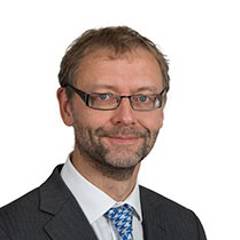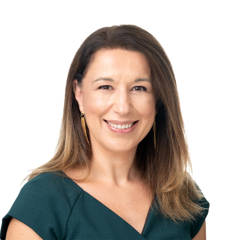07/11/2022
This is the second alert in a series of updates on CQC’s new ways of working under its forthcoming Single Assessment Framework.
In this alert, we look at the move to Quality Statements in general terms, and specifically focus on the new statements under the ‘Safe?’ domain.
Key Insights at a Glance
- The Quality Statements will apply to all services which CQC assess.
- The Quality Statements are much briefer and aim to be clearer to understand than the KLOEs.
- The Quality Statements are much more focused on outcomes rather than inputs.
- “Evidence Categories” will be published describing the types of evidence required to determine compliance with Quality Statements; different Evidence Categories for different types of services.
- Providers should review their internal processes to ensure these are aligned with the Quality Statements and the specific Evidence Categories relevant to their services once published.
Quality Statements
Although CQC will be retaining its five Key Questions (Safe, Effective, Caring, Responsive, and Well led) for assessing services, it is scrapping the underlying Key Lines of Enquiry (KLOEs) it uses to test those five Key Questions. In place of the KLOEs, CQC is introducing a number of Quality Statements which sit under the five Key Questions. Whereas, under the current system, there are 335 different KLOES (and supporting prompts) which inspectors need to ask, in the new Single Assessment Framework, these will be replaced by just 34 Quality Statements (pitched at the level of ‘Good’) and these Statements will apply to all services which CQC assess.
As such, the aim is that the system of Quality Statements will be much clearer to providers and their staff, as well as to service users and their families, as to what to expect of a ‘Good’ service.
The new system is, therefore, much simpler at this top level of the regulatory structure. However, at the same time, the system will recognise the differences between different types of services and that ‘one size cannot fit all’. CQC will achieve this by publishing ‘Evidence Categories’ which will set out the different types of evidence it will need to see in order to make judgements on whether the Quality Statements are met, and there will be different Evidence Categories for different types of services.
One further aim of the move from KLOEs to the Quality Statements is to try to remove some of the duplication which arose between different KLOEs, particularly in the domains of ‘Caring’ and ‘Responsive’. The attempts to reduce the level of duplication of issues relating to the same theme across a number of different Quality Statements is welcome. It is hoped that, when this is put into practice at the time of assessments and inspections, this will result in a move away from the current practice of failings in relation to a particular discreet issue leading to a provider being assessed negatively across a number of different KLOEs. We will have to see, however, how this pans out in practice.
Structure of the Quality Statements
As noted above, the Quality Statements are much briefer and aim to be clearer to understand than the KLOEs. The Quality Statements are much more focused on outcomes, rather than inputs, and, therefore, are less prescriptive and less focused on the processes which providers need to have in place in order to achieve those desired outcomes. For instance, the Quality Statement regarding ‘Involving people to manage risks’ does not, unlike its equivalent predecessor KLOE under Safe (S2) refer to requirements around recordkeeping; investigations into whistleblowing concerns or incidents; or managing challenging behaviours. Providers may welcome a less prescriptive approach from the regulator as to how outcomes should be achieved. However, it remains to be seen the extent to which more prescriptive requirements on providers are re-introduced when CQC publishes the required Evidence Categories for different types of services. It will therefore be important for providers, when reviewing their internal quality assurance processes, to ensure that these reflect not only the new Quality Statements themselves, but also the underlying Evidence Categories relevant to their types of service.
Subject to these overarching comments, and particularly bearing in mind that more detailed requirements may be introduced with the publication of the Evidence Categories, we set out below the Quality Statements in relation to ‘Safe?’ and consider how these compare to their equivalent predecessor KLOEs in the current system:
Safeguarding
“We work with people to understand what being safe means to them as well as with our partners on the best way to achieve this. We concentrate on improving people’s lives while protecting their right to live in safety, free from bullying, harassment, abuse, discrimination, avoidable harm and neglect. We make sure we share concerns quickly and appropriately.”
As noted with the general approach above, this Quality Statement is less focused on systems and processes and more focused on: personalising Safeguarding – working out what that means for the service user in question; and enabling positive practical outcomes (and preventing harm). The Quality Statement also appears to give greater emphasis to sharing concerns quickly and appropriately.
Involving people to manage risks
“We work with people to understand and manage risks by thinking holistically so that care meets their needs in a way that is safe and supportive and enables them to do the things that matter to them.”
Again, at the level of the Quality Statement, there is less focus on the provider’s processes (though this may come in the Evidence Categories). The focus of the Quality Statement is on working with service users to ensure their personal holistic needs are met to ensure they are safe, whilst being able to do the things that matter to them.
Safe environments
“We detect and control potential risks in the care environment. We make sure that the equipment, facilities and technology support the delivery of safe care."
The safety of environments (premises and equipment) has been elevated into its own separate Quality Statement, whereas it was just previously one aspect of the KLOE relating to ‘Managing risks’. The Quality Statement also includes a new element relating to ensuring that any “technology” used supports the delivery of safe care.
Safe and effective staffing
“We make sure there are enough qualified, skilled and experienced people, who receive effective support, supervision and development. They work together effectively to provide safe care that meets people’s individual needs.”
This is very similar to the previous KLOE, albeit that, again, the Quality Statement is less detailed and less prescriptive than the KLOE.
There is a slight change in wording in the Quality Statement with more express reference to staff receiving “supervision” and a change in wording from ensuring staff “training” to ensuring staff “development”, which seems to be a somewhat wider obligation.
The reference in the KLOE to ensuring staff receive training in safety systems has been removed, presumably to simplify the framework and avoid duplication with the Quality Statements around ‘Involving people to manage risks’ and ‘Safe environments’ above.
Medicines optimisation
“We make sure that medicines and treatments are safe and meet people’s needs, capacities and preferences by enabling them to be involved in planning, including when changes happen.”
Again, at the level of the Quality Statement, there is less focus on the provider’s processes. For instance, the Quality Statement does not refer to the handling and storage of medicines; record keeping in relation to medicines; and arrangements in relation to covert medicines (although this would be expected to come in the Evidence Categories).
The focus, at the Quality Statement level at least, is more on medicines optimisation, and enabling service users to be involved in the planning of their medication.
Safe systems, pathways and transitions
“We work with people and our partners to establish and maintain safe systems of care, in which safety is managed, monitored and assured. We ensure continuity of care, including when people move between different services.”
One area where the Quality Statements themselves appear to have a wider scope than the KLOEs is in relation to transitions between services. Under the KLOEs, this was merely referenced in relation to ensuring continuity of medication when people move between services. However, under the Quality Statements, this appears to be a wider obligation of ensuring safe care more generally when service users move between different services.
Infection prevention and control
“We assess and manage the risk of infection. We detect and control the risk of it spreading and share any concerns with appropriate agencies promptly.”
This is very similar to the previous KLOE, albeit that, again, the Quality Statement is less detailed and less prescriptive than the KLOE.
Learning culture
“We have a proactive and positive culture of safety based on openness and honesty, in which concerns about safety are listened to, safety events are investigated and reported thoroughly, and lessons are learned to continually identify and embed good practices.”
The Quality Statement has an increased emphasis on safety ‘culture’ and, for example, ensuring concerns regarding safety are “listened to”.
One point to note is that the Quality Statement requires providers to ensure that “safety events are investigated and reported thoroughly”. This obligation on providers will, however, have to be viewed through the lens of the Patient Safety Incident Response Framework (“PSIRF”), under which providers will not be expected to carry out full investigations in response to all patient safety incidents. NHSE’s PSIRF ‘Guide to responding proportionately to patient safety incidents’ makes the point that, in some circumstances, “a learning response may not be required or may not be the best way to address concerns and questions”. However, it is also expected that, as part of their ongoing assessment of how services learn when things go wrong, CQC will monitor organisations’ compliance with the Patient Safety Incident Response Standards.
Next Steps for Providers
As CQC changes its assessment framework, it is sensible for providers to review their own internal Quality Assessment and audit processes to ensure that these are capturing the same information as CQC uses in its assessments.
We would recommend, therefore, that providers review their internal processes to ensure these are aligned with the new Quality Statements and particularly the specific Evidence Categoriess relevant to their types of services when these are published.



